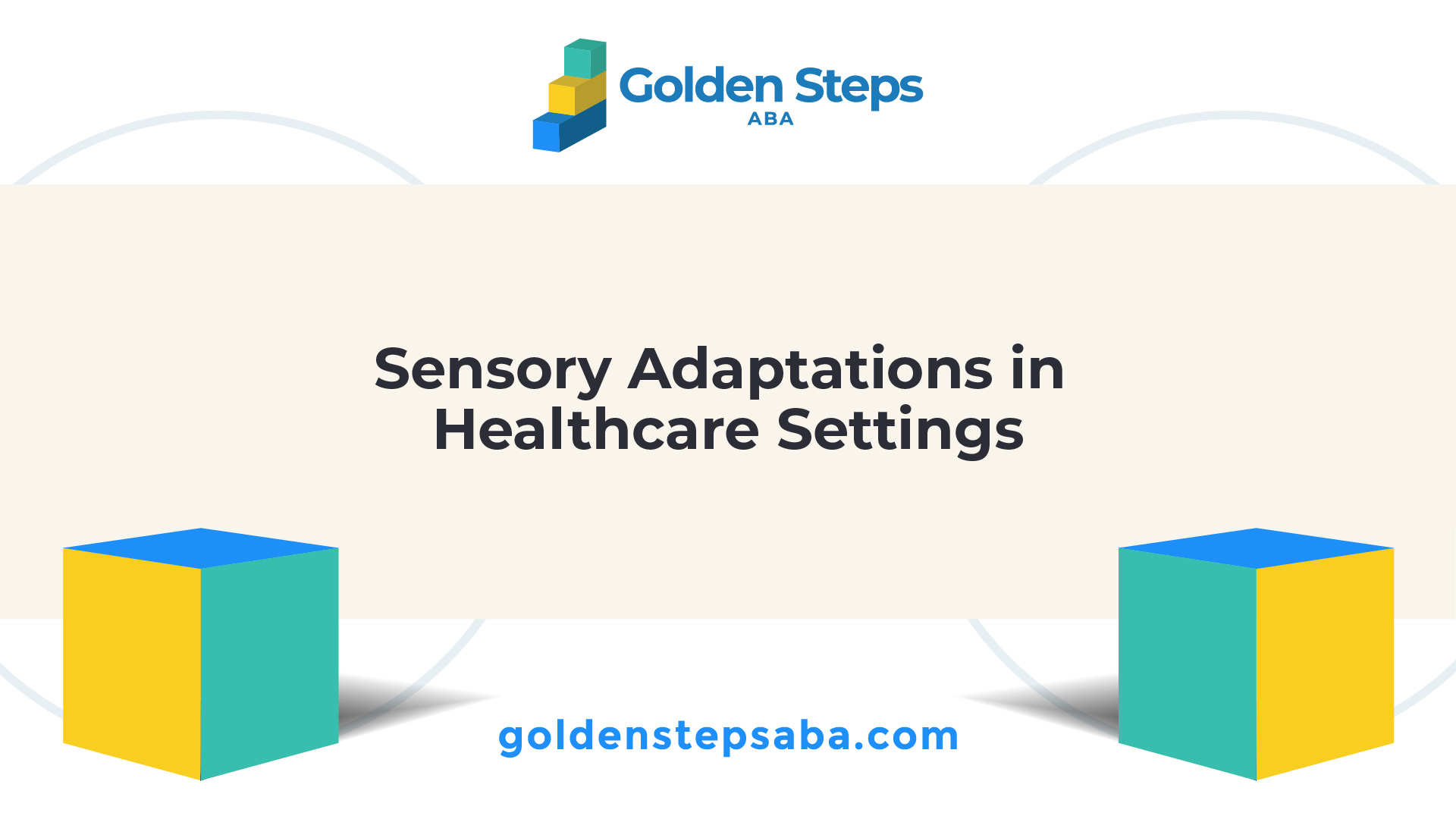Understanding Autism and Medical Visits
Sensory Challenges in Healthcare Settings
Autistic individuals often experience heightened sensory sensitivities that can make traditional healthcare environments overwhelming and distressing. This heightened sensitivity can lead to increased anxiety levels and difficulties in accessing necessary medical care [1]. Various sensory challenges are commonly encountered in healthcare settings, which can significantly impact their experience during medical visits.

Common Sensory Challenges in Healthcare:
Sensory ElementDescriptionLightingBright, fluorescent lights can cause discomfort and anxiety.Noise LevelsLoud sounds from medical equipment, conversations, and other patients may be distressing.Crowded SpacesHigh foot traffic and crowded waiting areas can lead to feelings of overwhelm.OdorsStrong smells from disinfectants, medications, and other sources can provoke discomfort.
Healthcare environments frequently do not accommodate the unique sensory needs of autistic patients. This inadequacy, along with a lack of training for healthcare providers regarding sensory features, can jeopardize effective service delivery, leading to poor health outcomes for autistic children [2].
Impact of Sensory Challenges:
Youth with Autism Spectrum Disorder (ASD) often visit the Emergency Department (ED) at higher rates than their neurotypical peers. These visits can be particularly overwhelming due to the combination of sensory demands, communication challenges, and social pressures, such as long wait times and bright lights. The distress caused by these elements can result in agitated behaviors and difficulties in effectively communicating with medical staff [3].
To better support autistic children during medical visits, healthcare settings can implement sensory adaptations. Evidence suggests that modifications such as quiet rooms, dim lighting, and sensory-friendly environments enhance participation in medical settings, including emergency rooms and dental offices. By prioritizing sensory needs and preparing both the environment and staff, it becomes possible to create a more accommodating and supportive healthcare experience for autistic children. For detailed information on how to better accommodate sensory challenges, visit sensory needs of autistic children.
Accommodating Autism in Healthcare
Creating a supportive environment for autistic individuals in healthcare settings involves implementing sensory-friendly practices and effective communication strategies. These adjustments are vital for reducing anxiety and improving the medical experience.
Sensory-Friendly Practices
Healthcare settings can present various sensory challenges for autistic patients. Sensory sensitivities can make traditional environments overwhelming and distressing, which can hinder access to necessary medical care. Implementing sensory-friendly practices helps create an accommodating atmosphere.
Here are key sensory-friendly practices:
PracticeDescriptionMinimize Wait TimesReducing time spent waiting can alleviate anxiety for autistic patients.Calming EnvironmentsUsing soft lighting, quiet spaces, and calming colors can help reduce sensory overload.Involved FamilyAllowing parents or caregivers to participate in care can offer comfort and support.Adapted CommunicationTailoring communication methods to individual needs can reduce misunderstandings.
Collaboration with families is crucial to understanding the specific sensory needs of autistic individuals. By engaging families in the planning process, healthcare settings can better accommodate these unique requirements [1].

Effective Communication Strategies
Effective communication is essential for providing quality care to autistic patients. It involves not only how healthcare providers interact with patients but also how they convey information about procedures and treatment.
Important communication strategies include:
Training healthcare staff in these strategies improves interactions with autistic patients. Comprehensive training programs enrich staff knowledge of autism awareness, sensory sensitivities, and best practices for offer compassionate care. By fostering a more inclusive healthcare environment, facilities can better support autistic individuals and their families during medical visits.
Preparing Autistic Children for Medical Visits
Collaborating with Families
Collaboration with families is essential in preparing an autistic child for medical visits. Parents and caregivers provide valuable insights into the specific sensory needs and preferences of their child, which is vital for creating a sensory-friendly environment in healthcare settings. By understanding these needs, medical facilities can implement appropriate adjustments to reduce sensory overload and anxiety during appointments. Families can prepare their child by setting expectations ahead of time, role-playing the visit, and discussing what will happen at the appointment [4].
Preparation ActivityDescriptionSetting ExpectationsDiscuss what will happen during the visit to create familiarity.Role-PlayingPractice scenarios to teach social skills and reduce anxiety.Minimizing Wait TimesAdvocate for shorter wait times to prevent overwhelming experiences.Asking QuestionsGather information about the visit in advance to reduce uncertainty.
The active involvement of families not only prepares the child but also fosters an environment of support and understanding during the medical visit.

Comprehensive Healthcare Staff Training
Comprehensive training programs for healthcare professionals play a crucial role in effectively preparing for visits from children with autism. These programs should focus on autism awareness, sensory sensitivities, and best practices for interacting with autistic individuals [1]. Staff trained in these areas are better equipped to provide compassionate care, leading to a positive experience for the child and family.
Healthcare settings should also consider consultation with behavior analysts or professionals trained in behavioral interventions. This approach can significantly mitigate challenges faced by children with Autism Spectrum Disorder (ASD) in medical environments, ensuring that appointments are efficient and less stressful [5].
Training could include:
By equipping medical staff with the necessary knowledge and skills, the healthcare experience can be significantly enhanced for autistic children, making medical visits less daunting and more manageable for them.
Challenges and Solutions in Medical Care
Emergency Medical Care Challenges
Children with Autism Spectrum Disorder (ASD) frequently visit Emergency Departments (EDs) at higher rates compared to their neurotypical peers. These visits can be overwhelming due to various sensory demands, communication hurdles, and social pressures. Common challenges include bright lighting, loud noises, and lengthy waiting times, which can lead to agitated behaviors and difficulty in effectively communicating with medical staff.
To address these challenges, several recommendations have been proposed for improving care for children with ASD in emergency settings. These include:
ChallengeSolutionsBright lightingDimmed or adjustable lighting optionsLoud noisesUse of white noise machines or soundproof roomsLong waiting timesDesignated quiet waiting areas or priority schedulingCommunication barriersUse of visual supports and clear instructions

Sensory Adaptations in Healthcare Settings
Sensory adaptations in healthcare environments are crucial in enhancing the participation of autistic individuals during medical visits. Implementing changes to the physical environment, such as creating quiet rooms equipped with sensory-friendly elements like dim lights and soothing sounds, has shown positive impacts on participation and interaction during healthcare visits.
For children with ASD, particularly in inpatient settings, enhancing their adjustment involves:
By focusing on these sensory adaptations, healthcare providers can significantly improve the experiences of children with ASD during medical visits. For further insights on supporting sensory needs, visit our article on sensory needs of autistic children.
Ensuring Quality Care for Autistic Children
Providing quality healthcare for autistic children requires an understanding of their unique needs and circumstances. Two key aspects include recognizing the special needs of autistic patients and utilizing visual supports during medical visits.
Special Needs of Autistic Patients
Autistic individuals often experience heightened sensory sensitivities, making traditional healthcare environments overwhelming and distressing. This can result in increased anxiety and difficulties in accessing essential medical care. Healthcare providers must understand these sensitivities and adapt their practices accordingly to create a supportive environment.
Some common special needs of autistic patients include:
NeedDescriptionSensory SensitivityResponses to lights, sounds, and textures that may be overwhelming.Communication PreferencesVarying levels of verbal communication, needing alternative communication methods.Routine and StructurePreference for predictable schedules and environments to reduce anxiety.Parental InvolvementInvolvement of parents in care decisions to make the child comfortable.
Healthcare professionals should focus on implementing sensory-friendly practices, such as using soft lighting, reducing loud noises, and creating calming waiting areas with elements like weighted blankets or fidget toys [1]. Collaboration with families is crucial to developing these environments effectively.

Visual Supports for Medical Visits
Visual supports play a significant role in preparing autistic children for medical visits. These tools can improve understanding, reduce anxiety, and enhance the overall experience. Visual aids can include picture schedules, social stories, and visual cues that explain what to expect during the visit.
Implementing visual supports might involve:
Using visual supports can lead to a more comfortable and clearer experience for autistic patients in healthcare settings. Moreover, these tools allow parents and caregivers to engage with their children effectively, helping them navigate the visit with less stress. For more insights on understanding sensory needs, consult our article on sensory needs of autistic children.
Healthcare providers should also receive training on these support strategies to ensure they can implement them effectively during medical visits. It fosters an inclusive and accommodating healthcare environment that addresses the specific requirements of children with autism.

